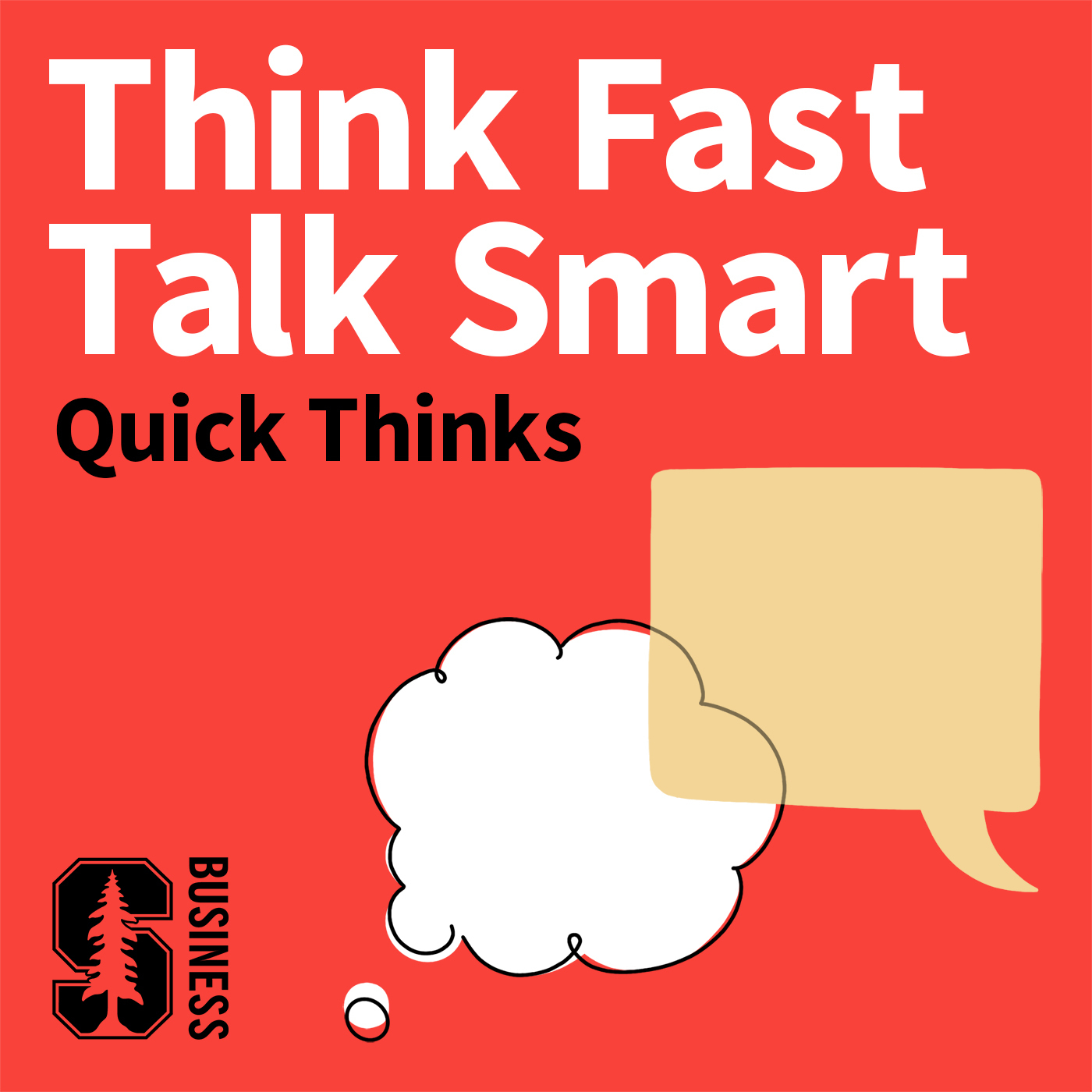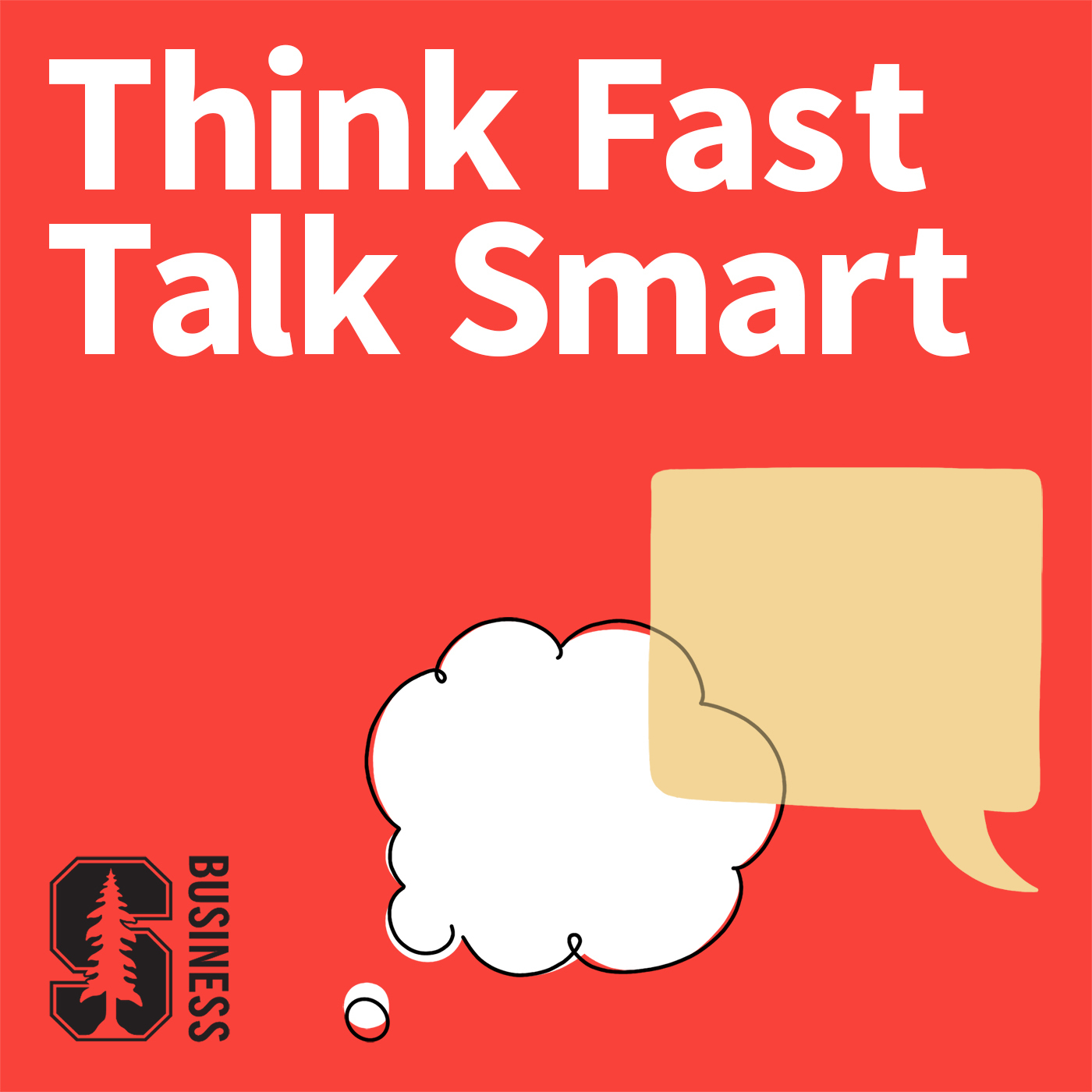
16. Quick Think: How to Craft Your Body Language When Confronting Objections

Think Fast, Talk Smart: Communication Techniques
Deep Dive
Shownotes Transcript
Hi, Matt here. I invite you to look into Stanford Continuing Studies. For over 20 years, I have taught in the program. Discover a diverse range of courses available both online and in person to anyone, anywhere in the world. Classes cover everything from fundamental business skills to the fascinating world of AI. This fall, join me for Communication Essentials for Work and Life, a new course designed to enhance and hone your communication skills in various situations.
Each week, guest speakers will join me for interactive lectures and Q&A sessions on topics like persuasion, storytelling, nonverbal presence, and reputation management. The course starts September 24th, and registration is now open. Learn more at continuingstudies.stanford.edu. Using analogies along with appropriate and responsive nonverbal cues can help manage tricky objections and challenges.
In a prior episode, GSB lecturer Bert Alper provided several tips and techniques for handling skeptical audiences. Today, we provide a few more useful ideas that were not included in the original episode. My name is Matt Abrahams, and I teach strategic communication at Stanford Graduate School of Business. Welcome to a Quick Thinks episode of Think Fast, Talk Smart, the podcast.
So let's jump in and learn how body language can help us in difficult communication situations. You know, we've spent a lot of time talking about what we can do with the content during an objection or some skepticism.
What are your thoughts on nonverbals, what we do with our voice and our bodies? Because a lot of that can work against the words that we're saying if we're not careful. There's two sides to this. So the first part is, as the speaker, quite literally have your eyes open when you can. I mean, in this podcast mode, I might not be able to see my audience, but usually when I'm dealing with contentious information, my audience is probably going to be in the room or maybe on the video conference listening.
Observing their behavior is a first step. If you see them starting to clench up or make some manifestation of frustration, lack of clarity, even anger,
That's a signal that something you just said created that reaction. And so now you know at what point you got into the contentious content of your discussion. That's a key clue to how you're going to respond to that. So it's always important to observe and read your audience's body language in anticipation of these moments.
Your own body language in response to that is critical as well. And it's not just your body, but your voice as well. I'm glad that you keyed on both of those because they're absolutely crucial. You and I both have talked about this forever. You don't want to fight fire with fire. So if they start to raise their voice, you raising your voice to match that is not likely to lead to a happy ending.
If you can remain calm and keep the emotional tension out of your voice as hard as that is, it does create an interesting opportunity to defuse. And your body language needs to go along with that.
Starting with what you're doing when they're raising the objection. You want to be an active listener. You want to communicate all of the signals that suggest you have a sincere interest in the concern they have, and you're not going to...
whitewash over it, it's important that they feel heard and you want everything in your body to suggest you're listening attentively to them. That means don't get your phone out while they're talking to you. Don't look at somebody else. Certainly don't roll your eyes as these comments are coming forward. You've got to put the best visual image of, I care about this concern and I want to address your issues. So it's leaning in, it's standing in a neutral position, arms aren't crossed in front of your chest, those kind of things. Absolutely. Right.
Similarly, when you start to respond, I think those same body language cues are valuable in the delivery of your response. So having a strong lower body with an active and open upper body shows that you're not wilting under the pressure, but you're also being open and vulnerable. You're willing to hear the pushback. And for us, in a lot of my coaching situations, the difference between your lower body being solid
and secure and grounded versus your upper body being open and in some ways more vulnerable physically. Go ahead and throw your spears, throw your tomatoes. I'm here to receive all that. I'm not intimidated by that. And I want to hear what you say. The other part that we haven't talked about at all here is the importance of eye contact. And in our small studio here, I'm enjoying the fact that I can make eye contact with you. In a larger audience, it's still critical to make eye contact
sustained eye contact during your delivery of the information and while the skepticism is being expressed.
Humanity appreciates eye contact. We trust eye contact. It is one of the things that if you change that element of your communication style, it tends to have a huge impact on people's perception of your trustworthiness and of your stability and confidence. So being able to hold eye contact as someone is challenging you, it's very powerful.
position in that conversation and then being able to maintain the eye contact as you deal with the response also shows that you've got good conviction in your ideas. Thanks for joining us for another episode of Think Fast, Talk Smart, produced by Stanford University's Graduate School of Business. For more information and episodes, visit gsb.stanford.edu or subscribe to our show wherever you get your podcasts. Finally, find us on social media at stanford.gsb.
Hi, Matt here. Before we jump in, I wanted to let you know about three unique executive education programs offered to senior level business leaders by the Stanford Graduate School of Business. The Executive Program in Leadership, the Emerging CFO Program, and the Director's Consortium Program are all being hosted here on Stanford's beautiful campus in the next few months, crafted with
proven strategies for success, and filled with diverse leaders from around the globe, taught by many of the guests you've heard on Think Fast, Talk Smart. Apply today at grow.stanford.edu slash upcoming to join us.